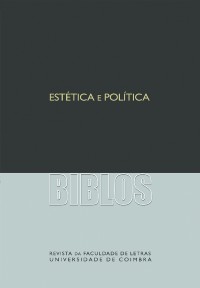Please use this identifier to cite or link to this item:
https://hdl.handle.net/10316.2/35515| Title: | A “experiência estética” na arte e na política segundo J. Rancière | Authors: | Silva, Nuno | Keywords: | Rancière;politics;art;aesthetic experience;dissensus;Rancière;política;arte;experiência estética;dissensus | Issue Date: | 2013 | Publisher: | Imprensa da Universidade de Coimbra | Abstract: | For Jacques Rancière the Politics and the Arts have inherently an aesthetic
dimension. What is intended with this article is to understand the reason of this
“inherence”. In this sense, we will try to understand, fi rstly, what differentiates
Rancière’s thought from the philosophical tradition (regarding the relationship
between Art and Politics) and, secondly, the phenomenon that being common
and structural to both disciplines, allows to re-think their relationship in a radical
way.
According to Rancière Art and Politics are characterized primarily by a
suspension of the rules that regulate the normal experience. It is precisely here that comes into play the role of “aesthetic experience”. What the “aesthetic
experience” does, either in Art or in Politics is to build a “sense” that “disrupts”
with the logic of presentation that tends to preside over the normal relationship
between things, events, etc., and their meanings. The “aesthetic experience”
creates “disruptions” with the “common sense” - with what is consensual
– and, therefore, indicates “new pathways”: «building new relationships
between reality and appearance, the individual and the collective». Para Jacques Rancière a Política e a Arte têm de forma inerente uma dimensão Estética. O que se pretende com este artigo é compreender a razão de ser desta “inerência”. Assim, procurar-se-á perceber, por um lado, aquilo que demarca o pensamento de Rancière da tradição fi losófi ca (no que respeita à relação entre Arte e Política) e, por outro lado, qual o fenómeno que, sendo comum e estrutural a ambas as disciplinas, permite re-pensar a sua relação de forma radical. Segundo Rancière Arte e Política caracterizam-se fundamentalmente por uma suspensão das regras que regulam a experiência normal. É justamente aqui que entra em cena o papel da “experiência estética”. Aquilo que a “experiência estética” faz, tanto no plano da Arte como no plano da Política é construir um “corpo de sentido” que “rompe” com a lógica de apresentação que tende a presidir à relação normal entre as coisas, acontecimentos, etc. e os seus signifi cados. Ou seja, a “experiência estética” cria “rupturas” com o “senso comum”, com aquilo que é consensual e, consequentemente, aponta “novas trajectórias”: «estabelecendo novas relações entre realidade e aparência, o individual e o colectivo». |
URI: | https://hdl.handle.net/10316.2/35515 | ISSN: | 0870-4112 | DOI: | 10.14195/0870-4112_11_17 |
| Appears in Collections: | Biblos |
Files in This Item:
| File | Description | Size | Format | |
|---|---|---|---|---|
| biblos_xi_cap18.pdf | 4.3 MB | Adobe PDF |  |
Items in DSpace are protected by copyright, with all rights reserved, unless otherwise indicated.
